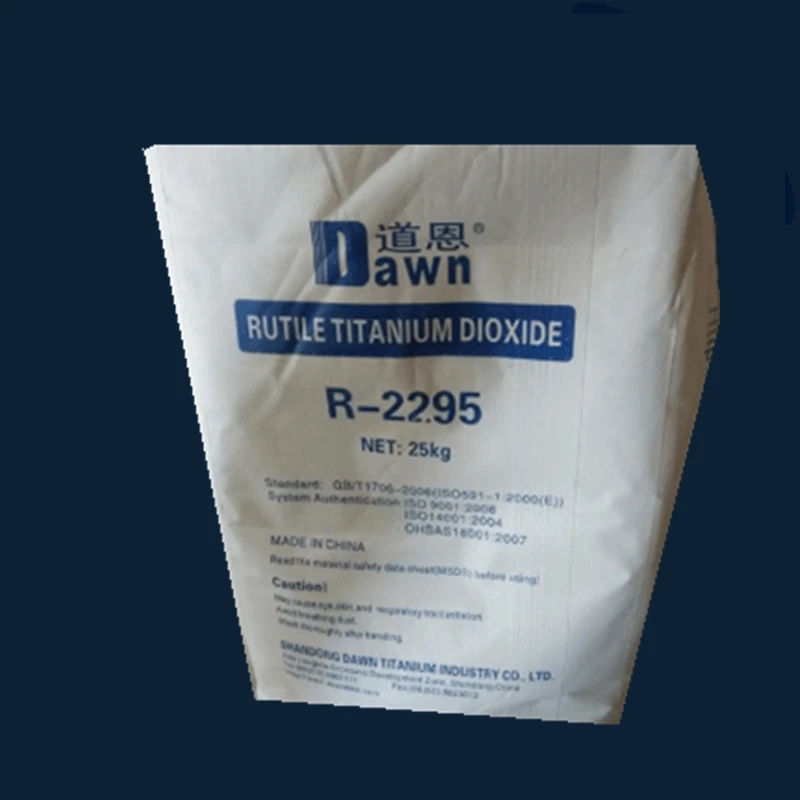
Oct . 11, 2024 21:35 Back to list
Exploring the Color Properties of Titanium Dioxide in Various Applications and Environments
The Color of Titanium Dioxide An Overview
Titanium dioxide (TiO2) is a highly versatile and widely used compound in various industries. Known for its exceptional opacity and brightness, it is often used as a pigment in paints, coatings, plastics, and papers. The color of titanium dioxide itself is generally described as a bright white, making it one of the most commonly utilized white pigments globally. In this article, we will explore the characteristics, applications, and significance of titanium dioxide's color.
Chemical and Physical Properties
Titanium dioxide appears as a fine white powder that is non-toxic and stable. Its chemical structure consists of titanium and oxygen, and it occurs naturally in several minerals, with rutile and anatase being the two most common crystalline forms. The rutile form is more widely used in industrial applications due to its superior durability and UV resistance.
The optical properties of titanium dioxide are remarkable. It has a high refractive index and strong light-scattering ability, which contribute to its bright white appearance. This quality is essential when used in products where reflecting light is necessary, such as in building materials, cosmetic formulations, and food products.
Applications of Titanium Dioxide
One of the most significant uses of titanium dioxide is as a pigment. In this role, it is valued for its brightness, covering power, and stability. When incorporated into paints and coatings, titanium dioxide provides excellent opacity and helps to protect surfaces from environmental factors. It is also a critical ingredient in the manufacturing of sunscreen due to its ability to absorb UV radiation, thus protecting the skin from harmful effects.
what colour is titanium dioxide

In the plastics industry, titanium dioxide is used to enhance the whiteness and opacity of products like containers, films, and sheeting. The automotive sector also benefits from titanium dioxide in the production of car paints, which often require durability and high reflectivity.
Beyond these applications, titanium dioxide's bright white color can also be found in various other products, including paper, ceramics, and even dental materials. Its role in food products is equally intriguing; titanium dioxide is often used as a food coloring agent (E171) to enhance the visual appeal of various items, such as confectioneries and dairy products.
Environmental and Safety Considerations
Despite its widespread use, there has been growing scrutiny regarding the safety of titanium dioxide, particularly in its nano-form, which exhibits different properties than its bulk counterpart. Regulatory bodies across the globe are assessing its potential health impacts, especially when inhaled. In many cases, titanium dioxide is deemed safe in its conventional applications, especially in food and cosmetics, as long as it is used within established safety limits.
As environmental concerns rise, there is also an increasing trend toward sustainable alternatives to titanium dioxide. Researchers are exploring eco-friendly pigments and ways to reduce reliance on mineral extraction, encouraging the development of synthetic substitutes that provide similar advantages with a reduced environmental footprint.
Conclusion
In summary, titanium dioxide is an essential compound known for its bright white color and remarkable properties. Its applications in various industries—ranging from paints and plastics to food products—underscore its significance as a pigment. While safety and environmental considerations are increasingly in focus, titanium dioxide remains a vital component in numerous everyday products. As innovation continues in this field, the future of titanium dioxide may include enhanced sustainability measures and improved formulations that maintain its desirable qualities while addressing health and environmental concerns.
-
Premium 6618 Titanium Dioxide for GPT-4 Turbo Applications
NewsJul.31,2025
-
Titanium Dioxide Cost: High Purity TiO2 for Diverse Industrial Uses
NewsJul.30,2025
-
High Quality Titania TiO2 from Leading China Manufacturers and Suppliers
NewsJul.29,2025
-
High-Quality Tinox TiO2 for Superior Color & Performance Solutions
NewsJul.29,2025
-
High Quality Titania TiO2 from Leading China Supplier & Manufacturer
NewsJul.29,2025
-
High-Performance r6618 TiO2 for Superior Whitening and Versatility
NewsJul.28,2025
